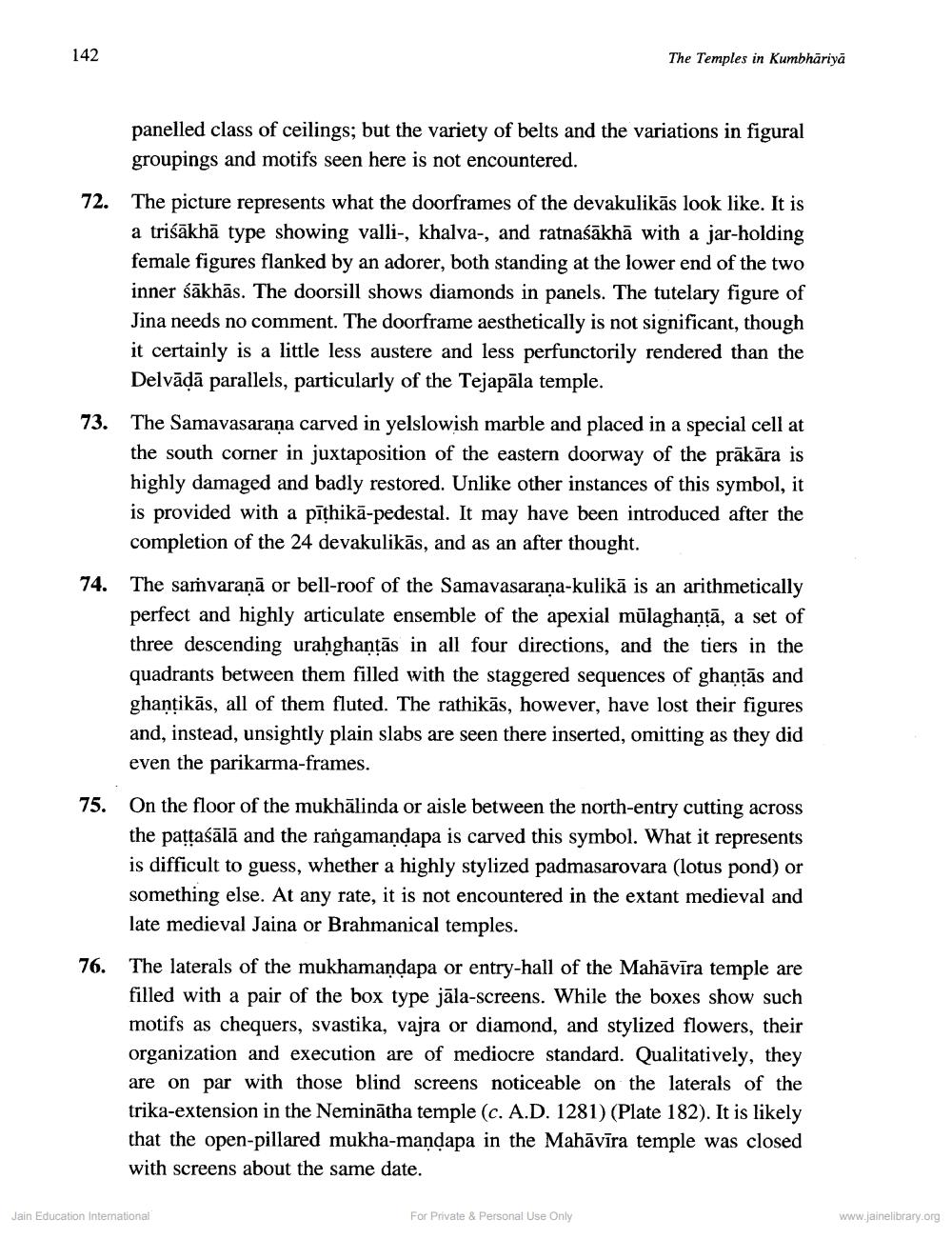________________
142
The Temples in Kumbhariya
72.
panelled class of ceilings; but the variety of belts and the variations in figural groupings and motifs seen here is not encountered. The picture represents what the doorframes of the devakulikās look like. It is a triśākhā type showing valli-, khalva-, and ratnaśākhā with a jar-holding female figures flanked by an adorer, both standing at the lower end of the two inner śākhās. The doorsill shows diamonds in panels. The tutelary figure of Jina needs no comment. The doorframe aesthetically is not significant, though it certainly is a little less austere and less perfunctorily rendered than the Delvādā parallels, particularly of the Tejapāla temple.
73.
The Samavasaraṇa carved in yelslowish marble and placed in a special cell at the south corner in juxtaposition of the eastern doorway of the prākāra is highly damaged and badly restored. Unlike other instances of this symbol, it is provided with a pīthikā-pedestal. It may have been introduced after the completion of the 24 devakulikās, and as an after thought.
74.
The samvaraņā or bell-roof of the Samavasarana-kulikā is an arithmetically perfect and highly articulate ensemble of the apexial mūlaghantā, a set of three descending urahghantās in all four directions, and the tiers in the quadrants between them filled with the staggered sequences of ghantās and ghanţikās, all of them fluted. The rathikās, however, have lost their figures and, instead, unsightly plain slabs are seen there inserted, omitting as they did even the parikarma-frames. On the floor of the mukhālinda or aisle between the north-entry cutting across the pattaśālā and the rangamandapa is carved this symbol. What it represents is difficult to guess, whether a highly stylized padmasarovara (lotus pond) or something else. At any rate, it is not encountered in the extant medieval and late medieval Jaina or Brahmanical temples.
75.
76.
The laterals of the mukhamandapa or entry-hall of the Mahāvīra temple are filled with a pair of the box type jāla-screens. While the boxes show such motifs as chequers, svastika, vajra or diamond, and stylized flowers, their organization and execution are of mediocre standard. Qualitatively, they are on par with those blind screens noticeable on the laterals of the trika-extension in the Neminātha temple (c. A.D. 1281) (Plate 182). It is likely that the open-pillared mukha-mandapa in the Mahāvīra temple was closed with screens about the same date.
Jain Education International
For Private & Personal Use Only
www.jainelibrary.org




